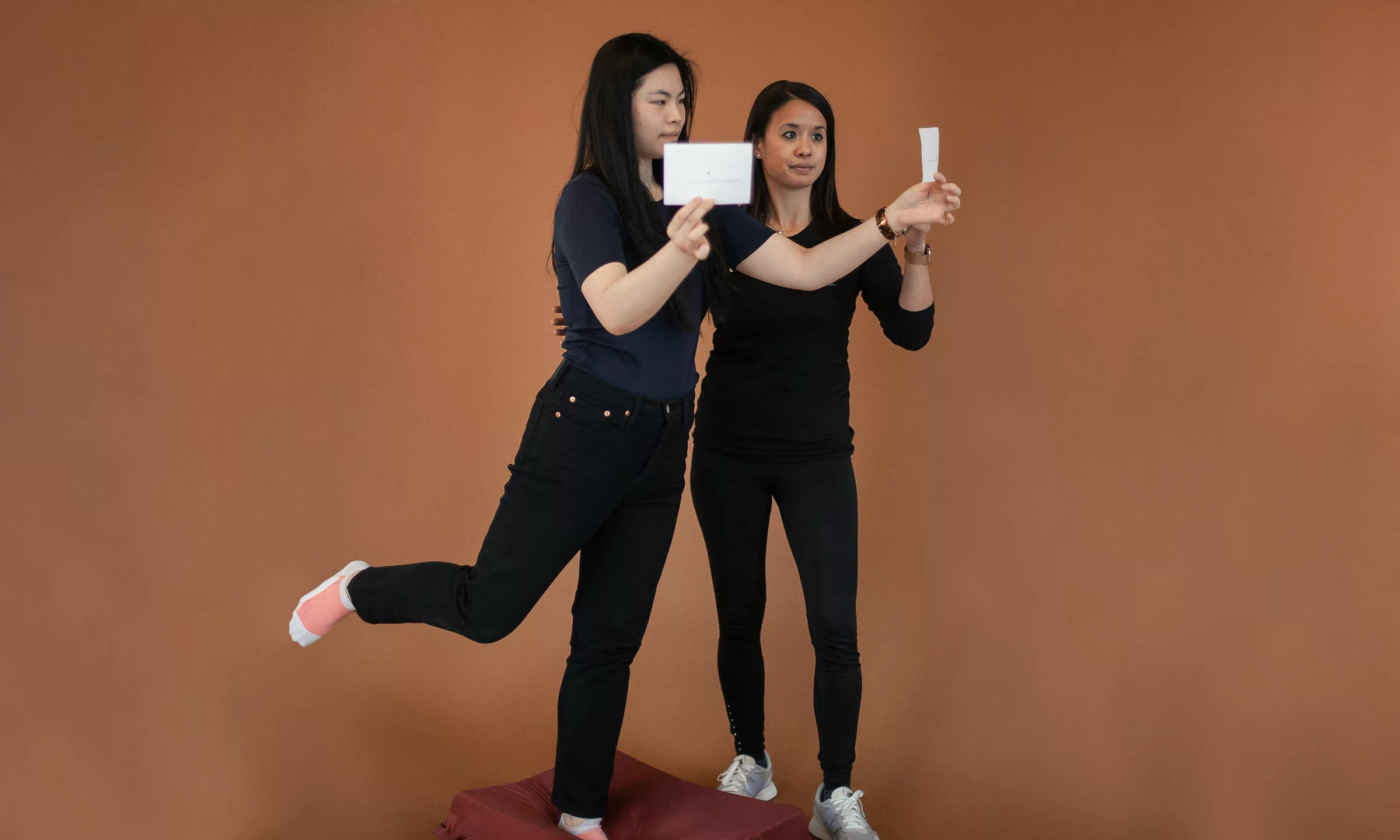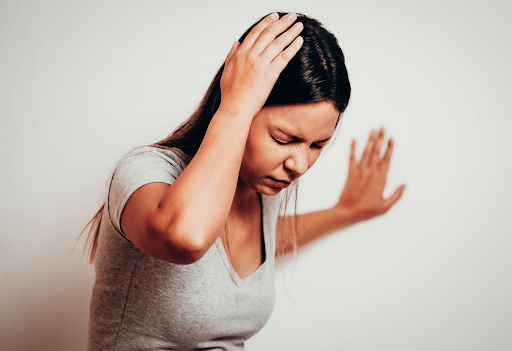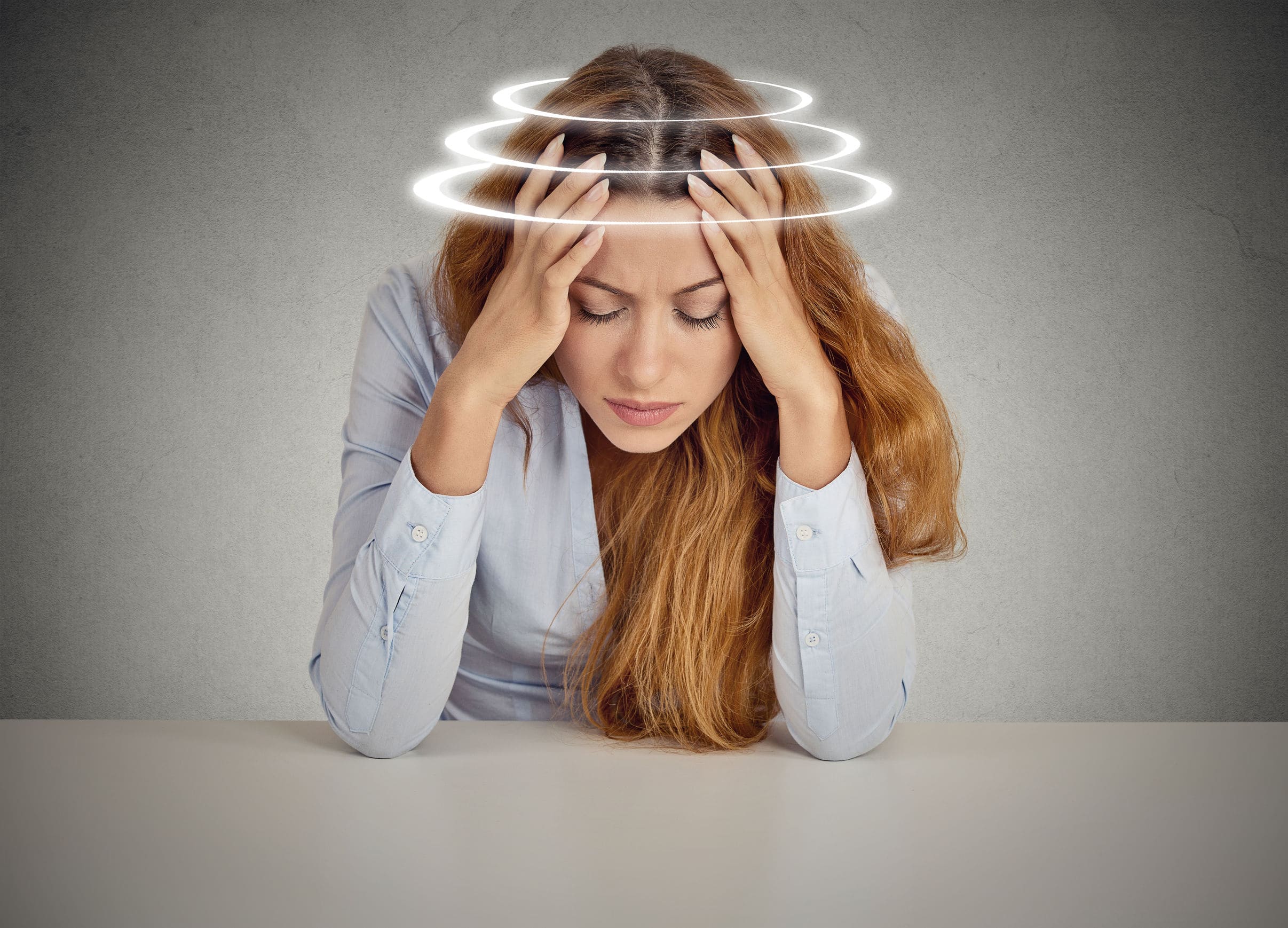
Conditions it supports:
- Vertigo
- Vestibulopathy
- Dizziness, Spinning, and/or Brain Fog
- Imbalance
- Instability and Blurred Vision with Head Movements
- Headaches
- Neck Tightness, Stiffness, and/or Pain
- Frequent Falls
- Post-Concussion
Vestibular Rehabilitation Therapy In Brooklyn, NY
Vestibular Rehabilitation Therapy at Physio Logic is led by Physical Therapist and Vestibular Rehabilitation Specialist, Dr. Sarah Rodriguez, PT, DPT. Dr. Rodriguez received her vestibular rehabilitation certification from the American Institute of Balance.
Brooklyn Vestibular Rehabilitation Therapy (VRT) is a specialized form of physical therapy uniquely designed to alleviate both the primary and secondary problems caused by vestibular disorders. These problems may include decreased balance or a sense of instability, frequent falls, vertigo, dizziness, headaches, “brain fog” or difficulty concentrating, blurry or double vision (especially with head movement), and neck pain and stiffness. VRT also helps to address post-concussion symptoms after head trauma. Using a combination of balance training, coordination of head and eye movements, repetition of the specific activities or movements that provoke symptoms, and manual therapy when indicated, VRT is intended to re-train the vestibular system and restore a patient’s sense of equilibrium.
The vestibular system is a component of our inner ear that gives us our sense of balance and its disruption contributes to the opposite: imbalance and incoordination.
As people age, the vestibular system becomes compromised, just as every other system in the body. The impairment in balance has significant secondary consequences. Because the sensation of movement becomes increasingly unpleasant, there becomes less incentive to be active, which results in those suffering from vestibular disorders becoming sedentary.
For older individuals, being active is essential in maintaining function. When the muscles of the heart are not challenged with cardio, the heart becomes weak and the body becomes deconditioned. When the muscles of the body are not challenged, even for the sake of basic daily function, they become weaker as they atrophy due to disuse. That individual, once only limited by their inner ear, is more limited by cardiovascular and musculoskeletal weakness.
WHAT TO EXPECT
For patients suffering from Benign Paroxysmal Positional Vertigo (BPPV), this condition can usually be treated in just one to two visits and can quickly alleviate debilitating sensations of vertigo, nausea, and unsteadiness.
For other vestibular disorders, sessions are typically held 1-2 times per week for several weeks or months, depending on the severity, complexity, and chronicity of the symptoms. By utilizing and progressing the repetition of provoking activities in order to extinguish symptoms, it is important to note that exercises will usually increase symptoms while they are being performed in VRT. As patients progress, however, the symptoms eventually subside. Sessions are spent focusing on balance training, vision exercises to improve oculomotor function and gaze stability, and individualized vestibular exercises. These specifically tailored programs are meant to re-train the vestibular system and improve the patient’s sense of where they are in space so that they can properly navigate their way through New York City with a strong sense of equilibrium.
MEET THE TEAM

Dr. Sarah Rodriguez, DPT
Doctor of Physical Therapy
Read More on Vestibular Rehabilitation
Using Vestibular Rehabilitation Therapy to treat dizziness, imbalance, vertigo, and more.
If you suffer from vertigo or motion sensitivity, experience difficulty with...
Treating Vertigo And Vestibulopathy With Vestibular Rehabilitation
Physio Logic Vestibular Rehabilitation Specialist and Physical Therapist, Dr. Klaus...
What is Vestibular Rehabilitation Therapy in Brooklyn?
Vestibular Rehabilitation Therapy (VRT) in Brooklyn is a unique type of physical therapy focused on tackling problems specifically related to the vestibular system, responsible for balance and spatial orientation. VRT aims to help patients experiencing dizziness, vertigo, and balance issues due to vestibular disorders or inner ear conditions, suffer less from these symptoms. Qualified physical therapists in Brooklyn use specific exercises and techniques to enhance the functioning of the vestibular system and improve an individual’s balance and stability.
How Does Vestibular Therapy Work in Brooklyn?
In Brooklyn, vestibular therapy starts with a comprehensive evaluation to assess the patient’s balance, eye movements, and other vestibular functions. Based on the assessment, the physical therapist tailors a personalized treatment plan. VRT usually comprises exercises involving head and body exercises and movements, which help stimulate the vestibular system and encourage its adaptation and compensation. Over time, and through sessions these exercises can help reduce dizziness, improve balance, and enhance the brain’s ability to process sensory information related to spatial orientation.
How long does Vestibular Rehabilitation take to work in Brooklyn?
The duration for vestibular rehabilitation to show noticeable improvements in Brooklyn can vary depending on the individual’s condition and response to treatment. Some patients might feel better within a few weeks, but for others, it could take several months of regular therapy to see big improvements. The frequency and intensity of therapy sessions may also impact the timeline of progress. It’s essential for patients in Brooklyn to follow their therapist’s recommendations and adhere to the prescribed exercises at home to expedite the recovery process. Regular communication and visits with the vestibular therapist can assist in monitoring progress and making any needed changes and adjustments to the treatment plan, ensuring the best possible results and outcome.

